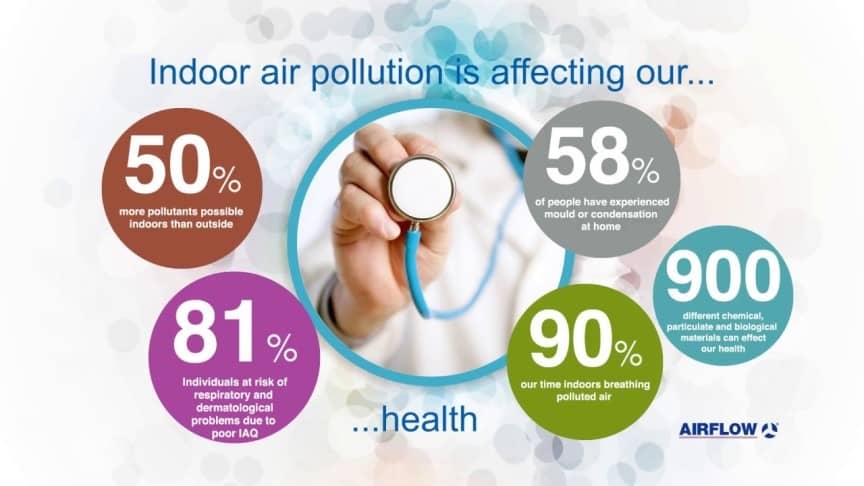
People commonly believe that outdoor air pollution is the only concern, while indoor air is safe. However, recent scientific research suggests otherwise. A study in the journal ‘Science of the Total Environment’ revealed that indoor air can be more harmful than outdoor air. Furthermore, the United States Environmental Protection Agency (EPA) states that indoor air pollution levels can be two to five times higher than outdoor air.
Defining Indoor Air Pollution
Indoor air pollution refers to the physical, chemical, and biological contamination of the air within buildings, workplaces, industrial and commercial establishments, and homes.
Effects of Indoor Air Pollution on Health
Indoor air pollution negatively impacts human health in various ways, including respiratory diseases, cardiovascular diseases, cancer, irritation of eyes, nose, and throat, headaches, dizziness, fatigue, and sick building syndrome.

Image Courtesy
Sources of Indoor Air Pollution
There are three primary sources of indoor air pollution:
- Biological Pollutants
Biological pollutants, such as bacteria, viruses, mold, fungi, dust mites, and pollen, thrive in moist and damp areas, accumulating in indoor air.
- Volatile Organic Compounds (VOCs)
Certain products and activities emit gases known as VOCs. These include building materials, cleaners, disinfectants, office printers and copiers, fuels, and tobacco smoking.
- Combustion Sources
Industrial and commercial establishments, especially in food and manufacturing industries, use combustion sources. These sources, such as gas stoves, wood stoves, boilers, chimneys, and fireplaces, release inhalable particulate matter (PM) into indoor air.
Strategies to Mitigate Indoor Air Pollution
Indoor air pollution can be reduced through the following strategies:
- Clean Spaces Regularly
Regular cleaning helps to keep indoor contaminants at bay. The frequency of cleaning depends on the source of pollution. For example, daily dusting and vacuuming are recommended, while cooling coils and humidifiers should be cleaned bi-annually or annually.
- Control the Source of Pollution
Source control involves careful product selection, modification, or use restrictions to eliminate or reduce emissions of harmful substances into indoor air. For example, using eco-friendly cleaners and disinfectants, replacing wood stoves with electrical or gas stoves, and keeping building materials locked in a cabinet or storeroom can help mitigate indoor air pollution.

